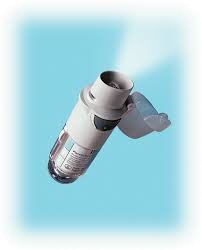After long years of continuous exposure to dust and various other pollutants, you are diagnosed to have COPD. Yes COPD is not a disease that started abruptly, it is due to the long term exposure to a variety of triggering factors. So before starting our medications, we need to have a piece of thorough knowledge about what our disease is? How is it caused? Etc… but asking all these questions after being affected is of less importance, so now we should think about the various lifestyle modifications that we can adopt to make life easier with COPD. It includes various counseling tips to be given to the patients to follow a healthy lifestyle. So let us get started.
WHAT IS COPD?
Chronic obstructive pulmonary disease is a progressive irreversible disorder of the airways in which the airways get narrowed or obstructed and interferes with breathing. It is often characterized by emphysema and chronic bronchitis.
Emphysema: it is a condition characterized by the shortness of breath often due to the damage to the air sacs in the lungs.
Chronic bronchitis: it is due to the inflammation in the airway lining leading to increased difficulty in breathing.
It is often told that the life expectancy of the patient with COPD decreases with age, but that is not fully true as it can be controlled to an extent with appropriate medications and proper lifestyle modifications even though the disease is not fully curable. But in today’s scenario, better treatment conditions are available to all patients, but only a small part of them actually knows what should be done from their part to follow a healthy lifestyle especially for COPD patients as they are more prone to infections.
LIFESTYLE MODIFICATION FOR COPD
- The major cause for COPD is attributed to cigarette smoking , so the first and for most modification include ‘SMOKING CESSATION’.
HOW TO COUNSEL FOR SMOKING CESSATION?
Brief counseling should be enough as long lectures are often avoided by the patient itself as it is very boring, so the counseling should be short and at the time informative and at the time effective also.
- The pharmacist can counsel the patient about the major role that smoking plays in COPD and verbally advise them to stop smoking.
- Various other smoking cessation programs are introduced which can be effectively used by the patient.
- In case if the patients are not able to continue smoking cessation, then the patients can be asked to take various nicotine replacement therapies.
NICOTINE REPLACEMENT THERAPY
When a chronic smoker stops smoking abruptly, it can cause various withdrawal symptoms, like they can have extreme cravings for nicotine. In such cases a nicotine replacement therapy becomes effective. It provides nicotine in the form of patches, lozenges, sprays or inhalers but does not provide any other harmful chemicals in tobacco.
HOW DOES IT WORK
It alone does not cause any advantage, but along with other treatment and other supportive cares, this can prove very efficient.
NICOTINE PATCH
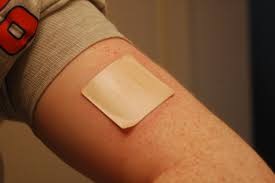
In the case of nicotine patches, the nicotine absorbs through the skin and mucous membrane. The patches should be placed in the morning on a clean dry area, it should be placed in the morning.
The sticky adhesive part of the patch should make contact with the skin and then the removal of the protective covering should be followed. The patch should be then pressed for 10 sec to the skin to make the contact with the skin more adhesive and appropriate. The patch releases nicotine into the body through the skin.
NICOTINE GUM
It is a type of chewing gum that releases nicotine into the bloodstream directly by absorption through the tissues in the mouth.
It is normally advised to take I piece of gum for 1-2 hrs. For the first weeks and it can be reduced as per the need for it.
It is not usually advisable to eat or drink 15 mins prior to chewing the gum
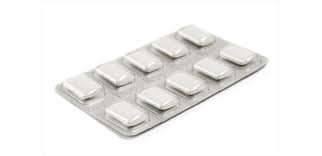
The gum should be chewed slowly until we can feel a tingling sensation in our mouth.
Then it should be placed in the space between the gum and cheek.
Then after when the tingling is gone, the chewing should be continued. Then if the cravings do not subside then the process can be continued by replacing the gum.
NICOTINE NASAL SPRAY
It contains a measured dose of nicotine solution which is sprayed into the nostrils while spraying care should be taken to avoid sniffing, swallowing, or inhaling. After spraying, it gets absorbed into the bloodstream through the nasal mucosal membrane. The Head should be title back while administering the inhaler. It should be used as directed.
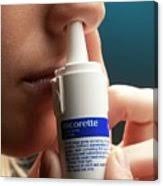
NICOTINE LOZENGES
It is used in the same way as that of nicotine gum only difference is that it is not chewed in the mouth it gets dissolved within 30 mins in the mouth. It is absorbed by the lining of the mouth in the bloodstream.
It should be placed in the mouth and moved from side to side and promote its dissolution in the mouth rather than swallowing it.
It is not often advisable to use more than 1 lozenge at a time and the consecutive use of lozenges is also not usually advisable.
Eating or drinking 15 mins prior to using the lozenges is also not advisable.
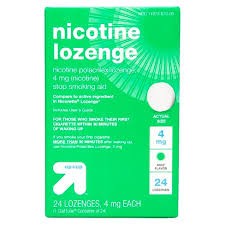
- In the case where the cause for COPD is increased exposure to various occupational hazards then it can be reduced.
- The patient with COPD should be extra careful in avoiding a little of the dust that can easily cause the exacerbations to occur.
- The patient must be encouraged to drink lots of water and also lie down with their head tilted slightly upwards.
FOODS TO AVOID INCLUDE:
- Fried foods – French fries, fried chicken, fried fish.
- Aerated drinks – aerated soft drinks, sparkling water, beer, cider, wine.
- Excess salt
- Dairy products – Yogurt, ice creams, cheese, butter, buttermilk.
- Cruciferous vegetables- Broccoli, cauliflower, radishes.
- Cold cut meat- Bacon, cold cut ham, hot dog.
- Avoid sulfite – Shrimp, potatoes
- Avoid food that causes heartburn and acid reflux- citrus fruit, fruit juice, tomato sauce, chocolate, coffee, apple stone fruits such as apricots, peaches, and melons.
FOODS TO INCLUDE IN THE DIET:
- Protein-rich food – pastured poultry, eggs, fish (salmon, mackerel, sardine).
- Complex carbohydrates – peas, bran, potatoes with skin, lentils, beans, oats, barley.
- Fresh fruits and vegetables.
- Potassium-rich foods- avocado, dark leafy vegetables, tomatoes, asparagus, beets, bananas.
- Healthy fats- nuts, seeds, coconut and coconut oil, olives and olive oil, fatty fish, and cheese.
- If you are OVERWEIGHT then it is advisable to follow a healthy diet and an appropriate exercise program. Excess body weight can cause an increase in the body’s demand for oxygen.
- If you are UNDERWEIGHT then the patient may feel weak or can usually be tired which makes them more prone to infections, in such cases make sure to include healthy, high calorie, food in your diet.
- Eat small meals, make sure to eat your main meal early.
- Always make sure that the patient sits in a comfortable position making them easy to breathe.
- Other counseling that can be given includes education about the correct use of inhalers.
- METERED DOSE INHALER
It is a type of inhaler that delivers the medicament directly into the lungs using a pressurized canister.
HOW TO USE AN MDI
- Shake it well before its use.
- Breathe out.
- Place the puff in between the teeth and cover it with the mouth.
- Breathe in slowly, press the puff once and breathe in slowly until you have taken a full breath.
- Remove the puffer from the mouth, hold the breath for 10 secs, and then breathe out.
- If you want to take a second puff then wait for 30 secs and continue the above-mentioned steps.
- After removing the mouthpiece, wash the mouth thoroughly.
- Store the inhalers at room temperature.
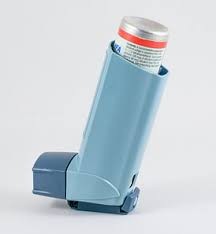
- DRY POWDER INHALER
It is a type of inhaler that delivers the medicament directly into the lungs in the form of dry powder. It is mainly used in kids and teens. Since the medication is in the form of dry powder it should be inhaled fast and deep
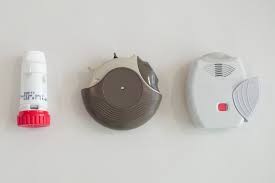
HOW TO USE A DRY POWDER INHALER
- First, open the inhaler mouthpiece. Also, make sure there are no unwanted particles in the mouthpiece.
- Then breathe out, make sure not to exhale into the mouthpiece.
- Followed by placing the mouthpiece in between the lips.
- Breathe in slowly, hold the breath for about 10 sec and then exhale.
- Repeat if more puffs are required in the same manner.
- Make sure to wash thoroughly after use.
- Some dry powder inhalers require the addition of dry powder into the inhaler before use, while in some others it is already administered in the inhaler itself.
- SOFT MIST INHALERS
It also a type of inhaler that provides the medication in the form of soft mist.
HOW TO USE AN SMI
- Remove the cap of t inhaler.
- Shake it for about five secs.
- Put the mouthpiece between your lips.
- Slowly breathe out.
- Gently press the inhaler, along with it take a deep breath in and continue to do that for 5 secs.
- Hold the breath for about 5 secs.
- Breathe out slowly, relax
- If more puffs are required then follow the above-mentioned steps.
SPACER
It is a device that aids in the process of using an inhaler, it helps to administer the inhaled medicaments more effectively into the lungs without losing the medicament. Usually, it is advisable to use the inhaler along with spacer as it is more effective.
HOW TO USE A SPACER
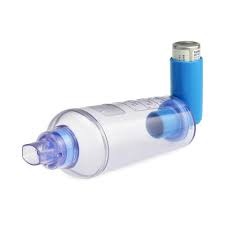
- If needed then assemble the spacer.
- Open the inhaler cap.
- Shake the inhaler well before its use.
- Insert the inhaler into the spacer.
- Place the mouthpiece of the spacer in between the lips.
- Breathe out slowly and deeply.
- Then slowly press the inhaler and inhale deeply and slowly for about 5 secs.
- After the completion of the process remove the spacer from the mouth, hold the breath for 5 secs.
- Then breathe out slowly and relax.
- If it is to be continued then wait for about 30 secs and then continue.
- After use removes the inhaler from the spacer, recap the inhaler and store it as directed.
- The spacer should be cleaned and stored appropriately.
- Make sure to wash the mouth after each inhaler usage.
